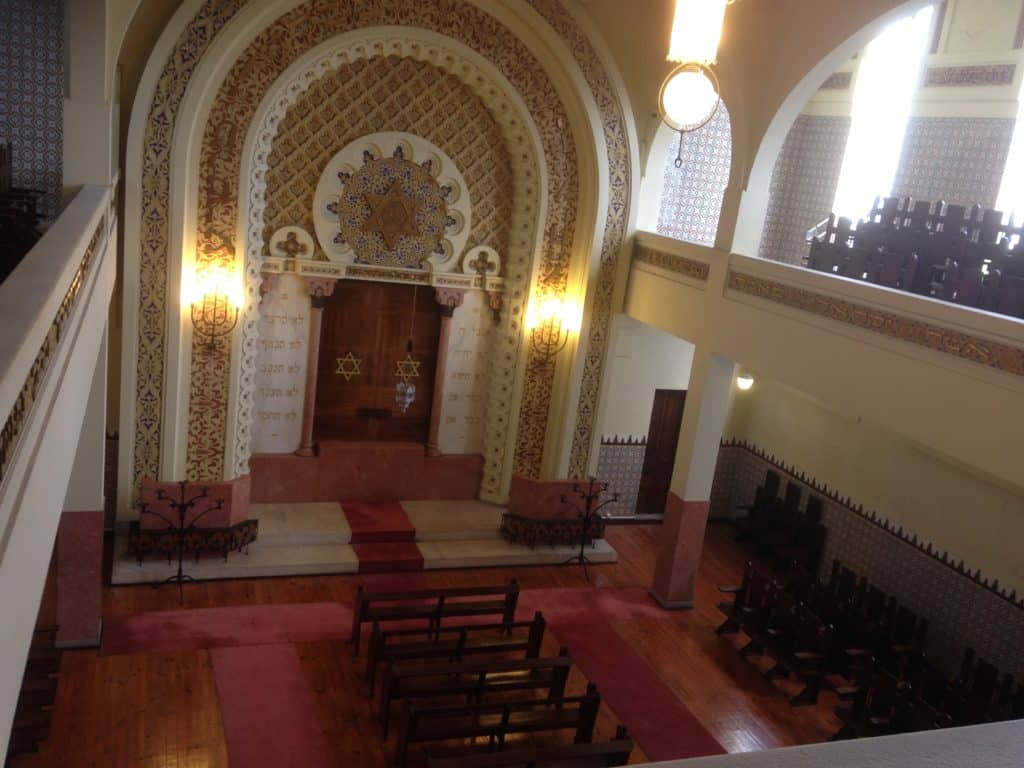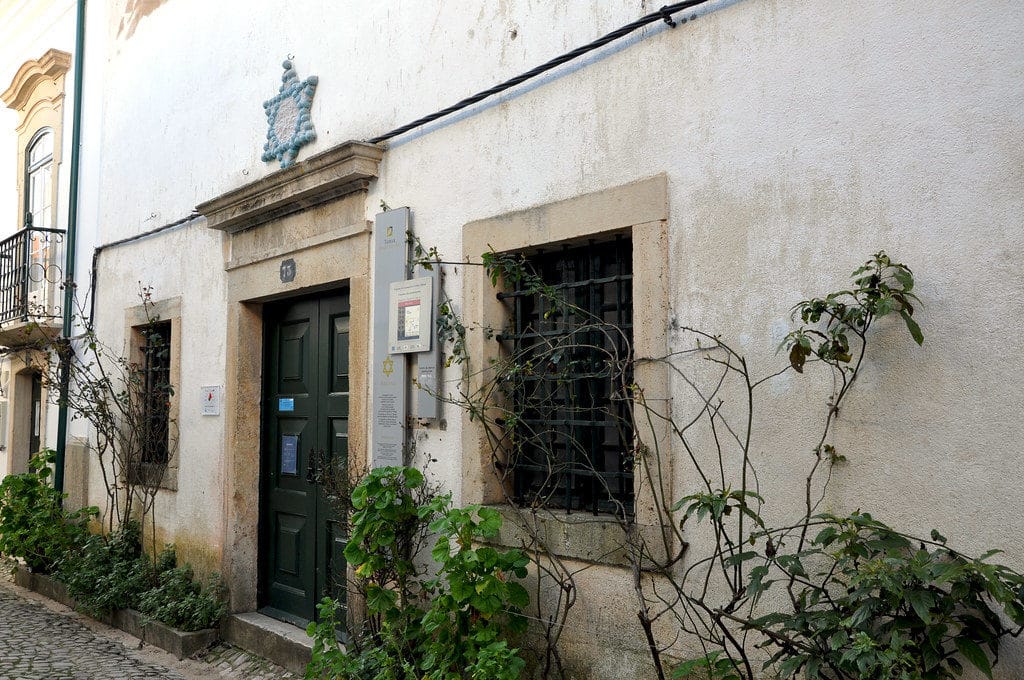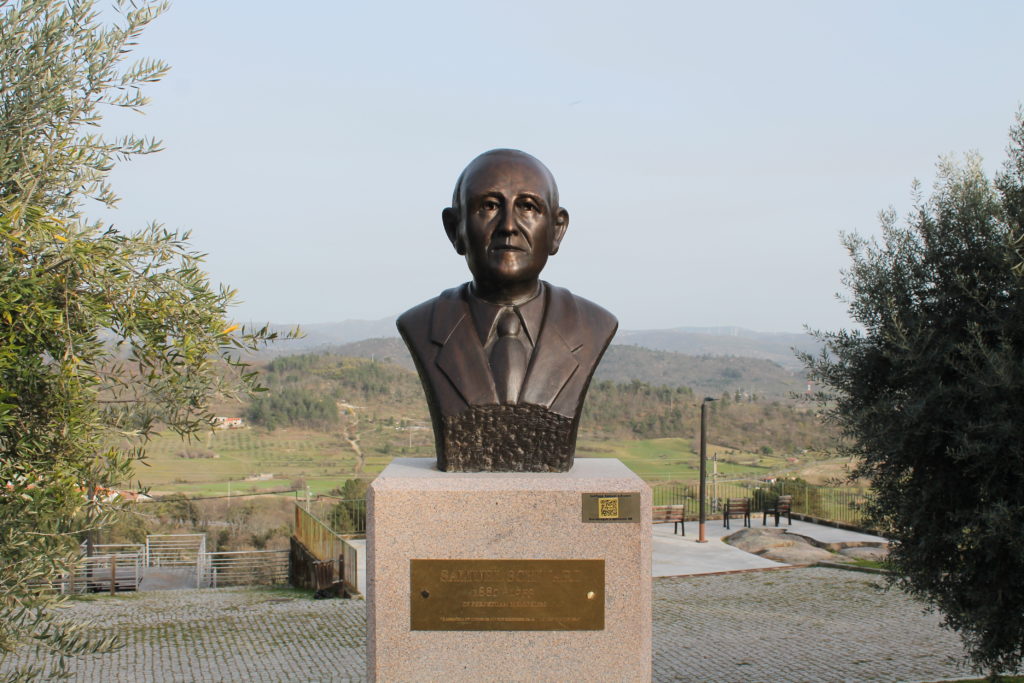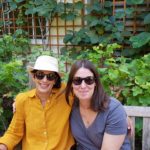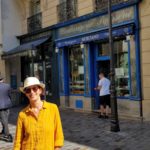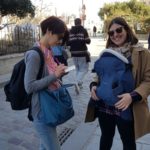Schwarz Family Chapter 3
Samuel Schwarz the Discoverer of the Marranos in Portugal
All starts while walking in the Marais, and visiting the Jewish quarter in the heart of Paris, also known as the “Pletzl” (Yiddish word for “small square/Piazza”), as it was called by the Jewish immigrants from Eastern Europe who settled there since the late 19th Century. On one of the corner streets, inside a small niche hides a statue of Virgin Mary, “The Lady of all Graces”.
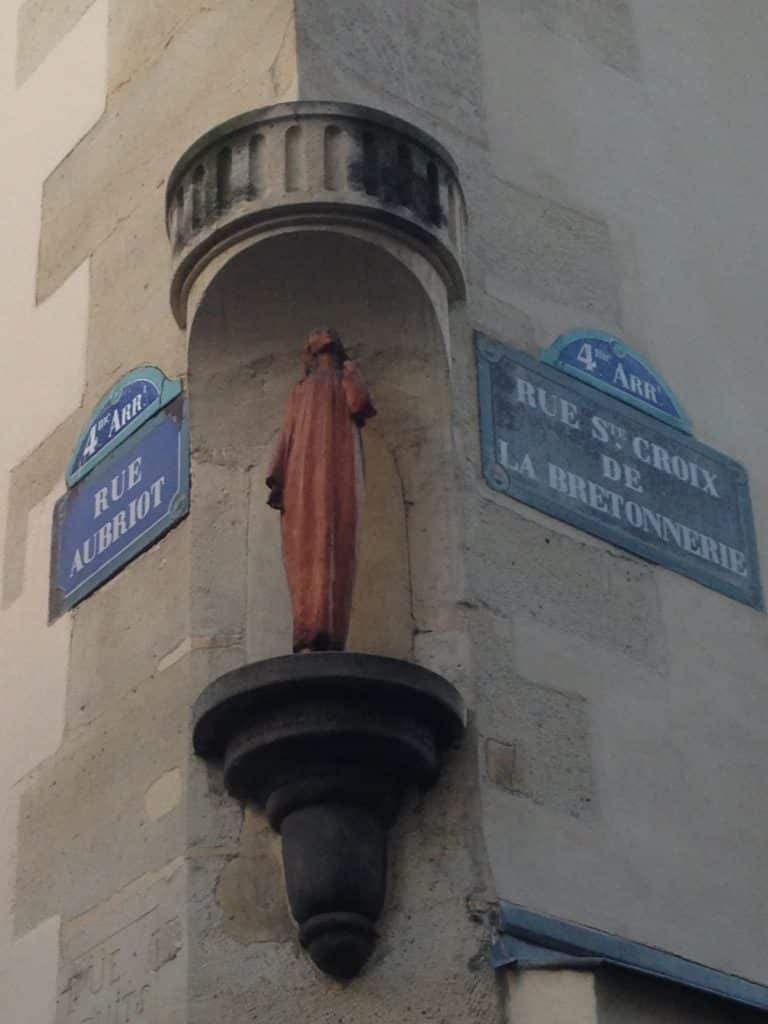
The work was realized by Marek Szwarc, an artist born in Poland to a Jewish Family who came to Paris in the 1920s where he became one of the leading artists of the Avant-Garde movement and who converted to Catholicism. Marek, the youngest of the 8 Szwarc’s siblings, felt great admiration, and remained very close all his life, to the eldest of his siblings, Samuel. Their relation is profoundly moving, all the more so as Samuel remained extremely attached to his Judaism, became an ardent Zionist. Moreover, it is this brother, Samuel, whose life trajectory led him from Poland to Portugal and who became known as the “discoverer” of the Marranos. In other words, Samuel exposed to the word the existence of hundreds of Crypto (secret)-Jews living in the north-east region of Portugal, some 400 years after the forced mass conversion of the Portuguese Jews!
This discovery is worth to be told.
Who is Samuel Schwarz?
Born in 1880, in Zigierz, a village close to Łódź in central Poland, Samuel studied in a heder and later in a Jewish high school. His father, Isucher (1859-1939), joined very early the intellectual movement known as the Haskalah (Jewish Enlightenment), and became an early supporter of Zionism. Practically self-taught, he had a keen interest regarding oriental languages and the history of the Jewish people. The Szwarc’s house had become the focal point of the local Jewish intelligentsia. Isucher thought of sending his son Samuel to study at the Rabbinical Seminar of Berlin; however, at the age of sixteen, Samuel was sent to Paris, where he completed his studies and graduated from the Mining School of Paris at the age of twenty-four. In the French capital, Samuel, while moving away from the traditional religious observance, got closer to the Zionism movement. The Dreyfus affair that had shaken France had a strong impact on him, and he was rapidly conquered by the book of Theodor Herzl, Der Judenstaat (The Jewish State, 1896).
After having obtained his degree from the École des Mines, Schwarz initiated his professional career and travelled to Azerbaijan, as well as several countries in Africa, Poland, Great Britain, Italy and finally Spain. It was during his stay in Spain that he was made aware of the existence of the Chuetas from Majorca. The Chuetas were Jews converted to Catholicism in the 15th Century, and who, within the centuries had become devote Catholics, but remained until the 20th century stigmatized and considered as Jews. Schwarz started henceforth to study the history of the Jews in the Iberian Peninsula and publish his first articles on the issue.

In 1913, Schwarz attended the 11th World Zionist Congress being held in Vienna, together with his beloved father, who was a delegate to the conference. There he made the acquaintance with Agatha Barbasch, the daughter of a Russian militant Zionist delegate from Odessa. Less than a year later, Samuel and Agatha married in Odessa and went on a honeymoon trip through Europe.
By November 1914, the First World War had broken out. No longer planning to return to Poland or Russia, since Agatha was pregnant, the couple decided to settle in Lisbon. As a mining engineer Schwarz found himself working in mines of wolfram and tin, in the region of Vilar Formoso and Belmonte.
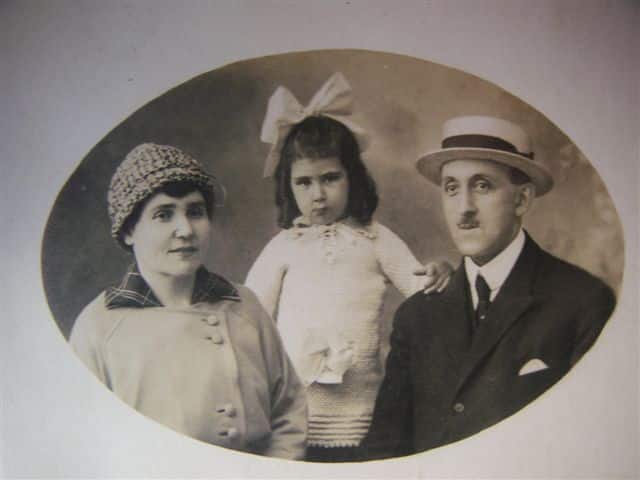
Once established in Lisbon, the learned and polyglot Samuel Schwarz quickly became one of the most active and influential members of the nascent Jewish community, recently recognised by the government. Very quickly as well Samuel found out that many Portuguese people were “labelled” either “Jews” (Judeus) or “New Christians” (Cristãos novos), although formally Catholics. His eagerness and his curiosity to dig into the history of Portuguese Judaism were at their peak. And this is how, as Samuel would later write, “by a set of unexpected circumstances and of curious accidents”, Samuel was about to discover the existence of secret or Crypto-Jews in the full tide of the 20th century in a Republican country of Europe!
Discovering the Marranos in Portugal
In 1917 both Samuel’s research for the forgotten Jews and his professional activities as a mine engineer led him to the village of Belmonte, in the Trás-Os-Montes region, where a flourishing Jewish community had existed since the thirteenth century. Interested by Hebraic inscriptions, Samuel found a Stele with some Hebrew characters which he managed to decipher, and recognised that it belonged to the early synagogue of the Jewish community of Belmonte. Practically at the same time, a Christian merchant in the mining field “warned” Samuel not to do any business with a certain rival – “It is enough for me to tell you he is a Jew”. This warning of course intrigues Samuel, who quite soon after, met Baltasar Pereira de Sousa, the aforesaid “rival”. De Sousa was the first to confess to Schwarz not only “his Jewish descent” but also that his family, in Belmonte, was still practicing Judaism secretly.

De Sousa introduced Schwarz to the Marrano families in Belmonte but it was not an easy task to break the barriers that protected the Marrano community to gain their trust and specially to convince them that he was a “Jew”. His stories about Judaism in general, and Zionism in particular, did not help, until one summer evening. Samuel was sitting and conversing with the Marrano sacerdotisas (priestess) as they were called. Inside the Marrano groups, these old women were the “guardians” of the community and the keepers of their tradition. At one point, he was asked to “prove” his Jewishness. Samuel Thus decided to recite the Shema Israel. Upon pronouncing the word Adonai, the sacerdotisa covered her face with her hands and said: “He knows the word of our Lord, he is one of us”.
From that moment on, it was as if a bond has been established between Samuel and the Marranos. Fully immersed in his investigation, he went beyond the limits of Belmonte and explored the totality of the region, sharing for long periods the intimate life of the Marranos, collecting their prayers, gathering manuscripts with ancient prayers, delving into archives.
After eight years of relentless research Samuel finally published his seminal work The New Christians in Portugal in the Twentieth Century (1925). This hundred pages’ book, written by someone who was not a professional ethnologist, is no doubt the most comprehensive treatise on the life, religious rites, ceremonies and prayers of the Portuguese Marranos.
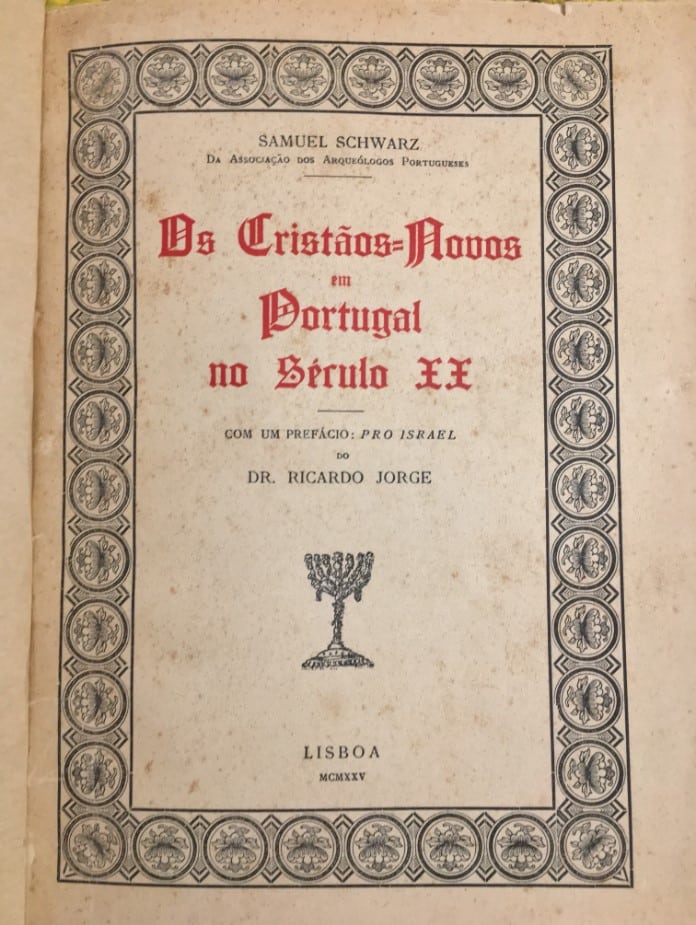
The “Religion of the Marranos”
As Schwarz shows, the main practices of Judaism still held by the Marranos were the observance of the Shabbat, characterised by the lighting of the candles on Friday evenings, which are put in hidden places, such as closets and cabinets in order to keep them out of the sight of strangers; the perpetuation of some rites relating to Pessah and, above all, the fasting on Yom Kippur (dia porro / dia do senhor), but also that of Esther, a day before the celebration of Purim. The Marranos attached great importance to this fasting, as they saw in Queen Esther, forced to conceal her Judaism, the incarnation of their own destiny.
Highly interesting is to notice how many religious practices of the Marranos show deviations from Orthodox Judaism. For example, instead of having the Seder on the 14th day of Nissan, the Marranos used to wait until the third day of pessah, to prepare the unleavened bread (matzot). The same was for Yom Kippur, which they celebrated on the 11th day of tishri instead of the 10th. The explanation for these alterations resides no doubt in the critical need to hide from the vigilant attentiveness of the Inquisition spies during 300 years. Some other practices – impossible to respect – were abandoned altogether, such as the circumcision, the ritual slaughter of animals (shehitah), the usage of certain Jewish worship objects (shofar, talith, tefillin, lulav), as well as the celebration of the harvest festival of Sukkot.
One of the first and very few to win the trust of the Marrano community, Schwarz especially came to understand the complex meaning of their secrecy. If at first, it was vital in order to avoid the scrutiny of the Inquisition, their secret practises had become over the centuries and throughout generations a central element of their beliefs, to a point that it became one of the pillars of their “religion”.
Finally, one of the greatest achievements of Schwarz’s book is the repertoire of the Marrano prayers that he managed to compile. In his book, Schwarz published for the first time about 100 prayers – daily prayers, celebration and fasting prayers, etc. – some that he transcribed from manuscripts kept through generations by the Marrano families, others that were recited to him orally. These prayers show on one hand the persistence of some rare Hebrew words (Adonai, ha-olam tzevaot) and, on the other the external influences, notably of the Catholic religion, such as the frequent usage of the word “saint” (Saint Raphael, Saint Esther, Saint Moise…), expressions such as pão santo (holy bread) to designate the unleavened bread (matzot), or the prayer echoing the Pater noster.
Overall, Schwarz’s book is a pioneering work that remains to this day a major contribution to the understanding, the history and the memory of Portuguese Marranism. A French version of the book – prepared already by Schwarz – was finally published in 2015 (!) by Chandeigne in Paris thanks to a manuscript that was kept in the Schwarz’s family. An English version by the same editor will be available in 2021.
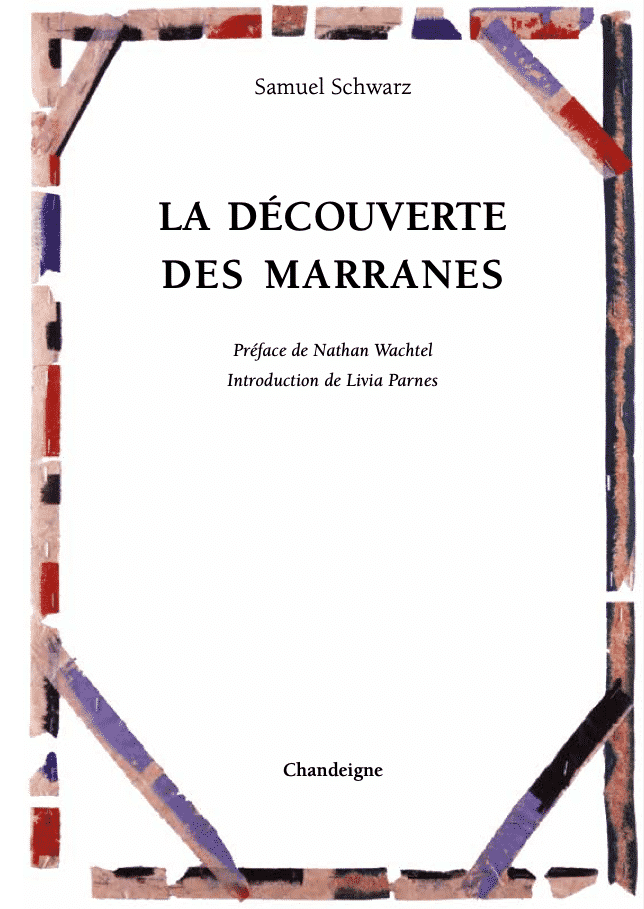
Re-judaizing the Marranos
It is no wonder that the discovery of the Marranos and the publication of Schwarz’s book created a shock wave within the worldwide Jewish community. Indeed it led to the launching of an entire mission to “re-judaize” the Marranos, in other words to enable their integration in formal Orthodox Judaism. This mission was entitled “The Work of Redemption” (Obra do Resgate) and was led by an extraordinary individual, Arthur Carlos de Barros Basto, whose life is as astonishing as his work. Within a dozen of years, various Jewish communities in the north-east of Portugal were established and endowed with synagogues.
In 1929 Barros Basto went on to realise what he considered to be his life’s dream, the construction in Oporto of a palatial synagogue, Mekor Haïm (“Source of Life”) – that, to his words should serve as a Jewish cathedral in the north of Portugal and a symbol of the tangible rebirth of Jewish life in Portugal. The same year he created a Theological Jewish Institute, Yeshivah Rosh Pina (“The Central Pillar School”), aiming the educating of young Marranos. The construction of the synagogue would only be completed ten years later (1938), thanks to a substantial donation from the Kadoorie family of the Shanghai Jewish community. Today, one can still visit the Kadoorie-Mekor Hayim synagogue in Porto, located on 340 Guerra Junqueiro Street, and appreciate the permanent exhibition on Portuguese Judaism focalizing on “The Work of Redemption“. Alongside the synagogue of Lisbon, it remains one of the two largest synagogues in Portugal.
Considering his mission to have a messianic dimension, Barros Basto operated as a missionary pastor in the villages where his flock was scattered. He carried out circumcisions, and preached the Jewish religion with relentless zeal.
Unsurprisingly, this turmoil of actions was not welcomed by all. It was both criticized by the leaders of the Jewish community in Lisbon including Samuel Schwarz, who mainly opposed to the proselyte approach of Barros Basto, and by the Catholic Church, which became a strong alignment of the New State (Estado Novo) under Salazar. In the late 1930s, with the inflow of Jewish refugees arrived in Portugal fleeing Nazi Germany and the outbreak of WWII, “The Work of Redemption” continued to decline and with it, the Marranos returned to their previous practices.
An ancient synagogue in Tomar and the Jewish Community of Belmonte
As to Samuel Schwarz, in the 1930s and 40s, he took a proactive role in the defence of the Zionist cause with various committees and organisations in Lisbon. The creation of the State of Israel in 1948 was a major happy shock for him. His dream to go to Israel did never come true. Schwarz died in 1953 in Lisbon. But Schwarz had another dream, which was half-way fulfilled. In the 1920s, Schwarz identified in the city of Tomar in the centre of Portugal an edifice that used to be a synagogue until 1497 and the forced conversion of Portuguese Jews. Schwarz purchased the place and realized various archaeological excavation. In 1939 he sold the edifice to the Portuguese State under the condition it would become a museum of Portuguese Judaism. It took some 40 years for the ancient Synagogue of Tomar to be open to the public, yet, in poor conditions. Some recent investigations enabled to find the rests of a mikveh (ritual bath). Finally, thanks to municipal and private support, the synagogue was entirely renovated and restored. One can thus visit the site, admire the originality of its architecture and find one of the very early steles with Hebrew inscription, belonging to a synagogue in Lisbon, that testifies to the presence of Jews in Portugal.
What Schwarz never knew is that in the early 1980s, slightly after the downfall of the Salazar regime, other researchers would “rediscover” the Jewish-Marranos inhabitants of Belmonte! In the following years, encouraged by foreign rabbis, members of the Jewish Portuguese community and representatives of the government of Israel, some Marranos expressed their will to “return” to mainstream Judaism. In 1990, the Jewish community of Belmonte was officially recognised. The synagogue Bet Eliahu was founded in 1996, followed by the opening of a Jewish museum.
Recently, at the end of 2019, the Belmonte municipality decided to give the name Samuel Schwarz to a square in the city and to erect a bust of Schwarz as a tribute to his profound influence and his immense contribution to the study and preservation of Portuguese Jewish heritage.
If you missed the previous parts for the whole story :
Part 1 : a Curious Virgin Mary in the jewish quarter of Paris
Continue Reading Part 2 : Marek’s daughter Tereska : A Jewish family of all Arts !
You can meet the Author of the Article : Livia
Livia is a Tour guide in Paris
http://www.desgensinteressants.org/marek-szwarc/index.html
For further reading:
http://www.desgensinteressants.org/samuel-schwarz/index.html
Samuel Schwarz, La découverte des Marranes, Paris, Chandeigne, 2015.
Cecil Roth, The history of the Marranos [1931] Varda books, 2001.
you can book Livia for the Jewish Paris Tour
Part 1 : a Curious Virgin Mary in the jewish quarter of Paris
Continue Reading Part 2 : Marek’s daughter Tereska : A Jewish family of all Arts !
Continue Reading Part 3 : A journey around the world !
We hope to see you soon in our Jewish Quarter Le Marais !

